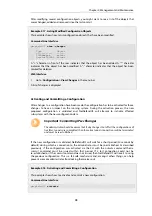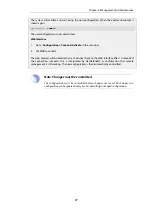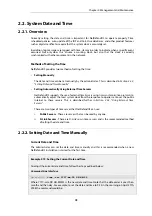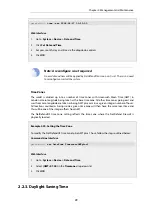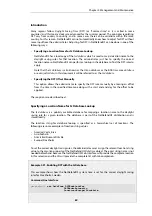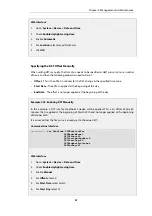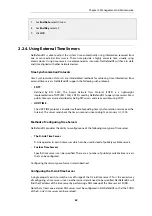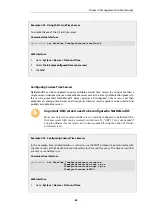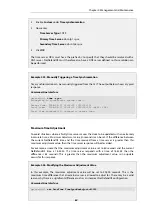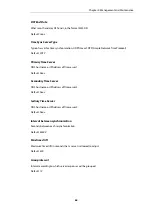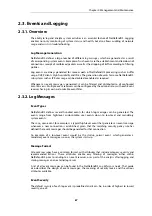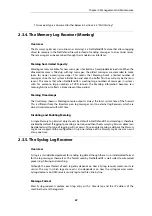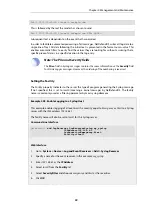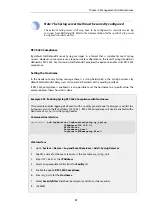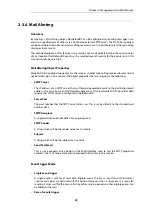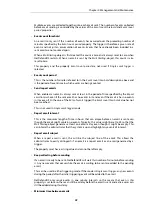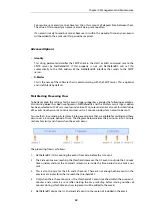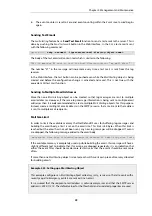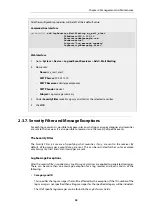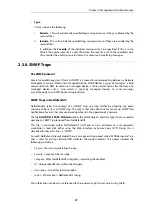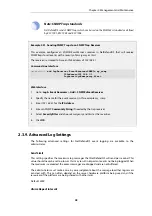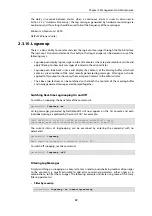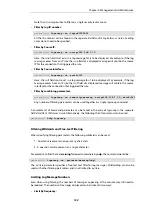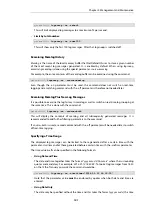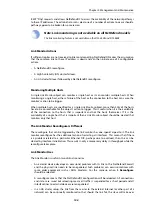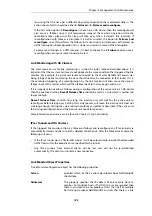
Feb 5 2000 09:45:23 firewall.example.com
This is followed by the text the sender has chosen to send.
Feb 5 2000 09:45:23 firewall.example.com EFW: DROP:
Subsequent text is dependent on the event that has occurred.
In order to facilitate automated processing of all messages, NetDefendOS writes all log data to a
single line of text. All data following the initial text is presented in the format
name=value
. This
enables automatic filters to easily find the values they are looking for without assuming that a
specific piece of data is in a specific location in the log entry.
Note: The Prio and Severity fields
The
Prio=
field in SysLog messages contains the same information as the
Severity
field
for D-Link Logger messages. However, the ordering of the numbering is reversed.
Setting the Facility
The
Facility
property indicates to the server the type of program generating the Syslog message.
If not specified, this is set to
local0
(meaning a kernel message) by NetDefendOS. The facility
name is commonly used as a filtering parameter by most syslog daemons.
Example 2.28. Enable Logging to a Syslog Host
This example enables logging of all events with a severity equal to
Emergency
or
Alert
to a Syslog
server with the IPv4 address
192.168.6.1
.
The facility name will also be set to
local1
for this Syslog server.
Command-Line Interface
gw-world:/> add LogReceiver LogReceiverSyslog my_syslog
IPAddress=192.168.6.1
LogSeverity=Emergency,Alert
Facility=local1
Web Interface
1.
Go to: System > Device > Log and Event Receivers > Add > Syslog Receiver
2.
Specify a name for the event receiver, in this example
my_syslog
3.
Enter
192.168.6.1
as the IP Address
4.
Select
local1
from the Facility list
5.
Select SeverityFilter and choose
Emergency
and
Alert
as the severities.
6.
Click OK
Chapter 2: Management and Maintenance
90
Summary of Contents for NetDefendOS
Page 30: ...Figure 1 3 Packet Flow Schematic Part III Chapter 1 NetDefendOS Overview 30 ...
Page 32: ...Chapter 1 NetDefendOS Overview 32 ...
Page 144: ...Chapter 2 Management and Maintenance 144 ...
Page 284: ...Chapter 3 Fundamentals 284 ...
Page 392: ...Chapter 4 Routing 392 ...
Page 419: ... Host 2001 DB8 1 MAC 00 90 12 13 14 15 5 Click OK Chapter 5 DHCP Services 419 ...
Page 420: ...Chapter 5 DHCP Services 420 ...
Page 573: ...Chapter 6 Security Mechanisms 573 ...
Page 607: ...Chapter 7 Address Translation 607 ...
Page 666: ...Chapter 8 User Authentication 666 ...
Page 775: ...Chapter 9 VPN 775 ...
Page 819: ...Chapter 10 Traffic Management 819 ...
Page 842: ...Chapter 11 High Availability 842 ...
Page 866: ...Default Enabled Chapter 13 Advanced Settings 866 ...
Page 879: ...Chapter 13 Advanced Settings 879 ...

